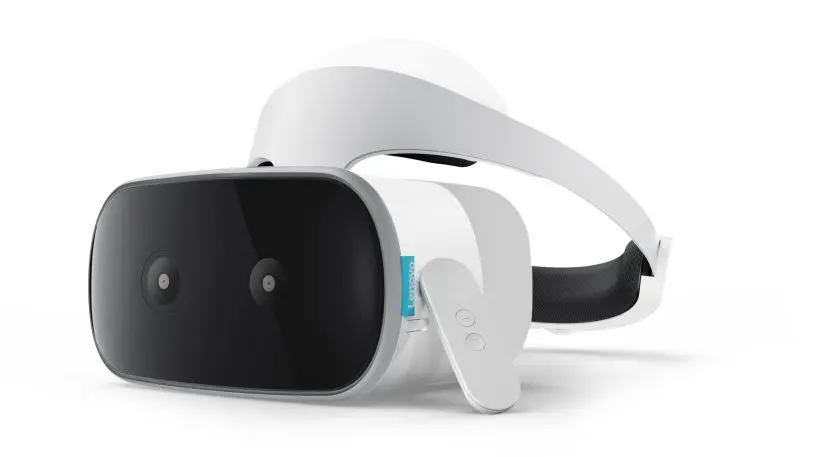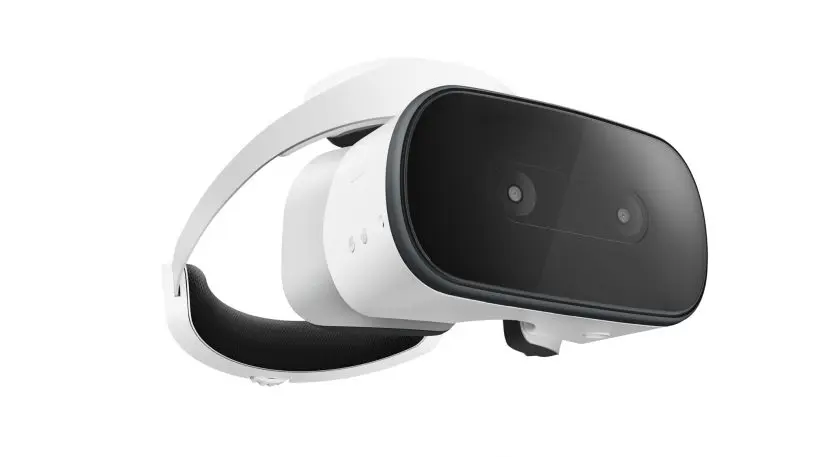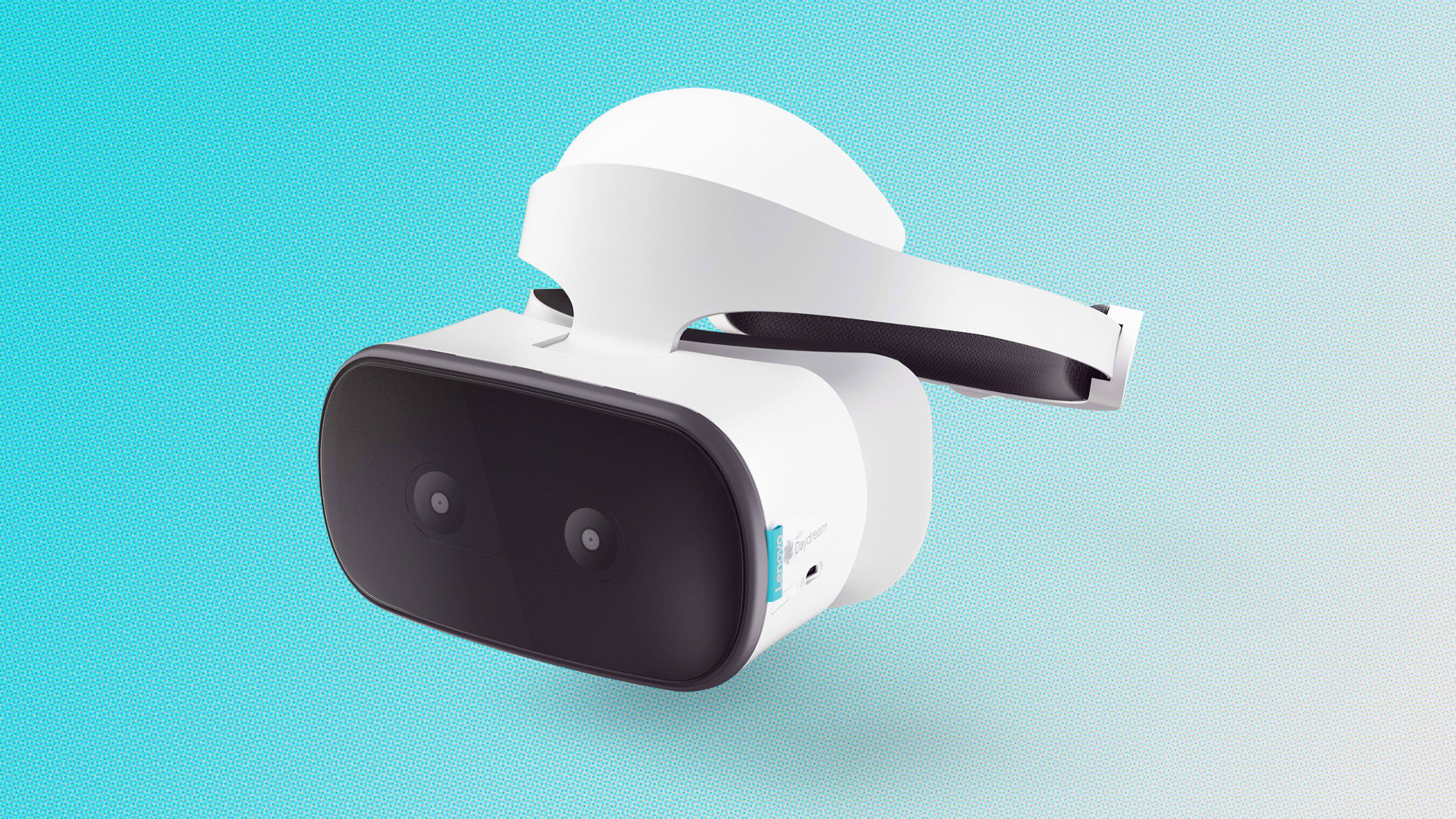For more than two years, consumer virtual reality has been in 1.0 mode. The first generation of VR devices needed to be linked to either an external PC or a smartphone from the likes of Facebook-owned Oculus, HTC, Google, Sony, and a few others. But this year, we’ll see the beginnings of VR 2.0: Stand-alone headsets.
Today, Google and Lenovo pulled back the wraps on their entrant into the stand-alone VR world, the Mirage Solo, a device that has all its computing onboard, and which is capable of positional tracking with no external sensors.
Stand-alone VR is one of the innovations that could help virtual reality become a truly mainstream technology given that it does away with all the cables and wires that weigh down the user experience on systems like the Oculus Rift or HTC Vive. Although analysts predict that VR will be a $38 billion industry by 2026, it has been slow to gain traction with consumers. And while things like lower hardware prices, more and better content, and improved social experiences will help, innovations in the hardware, like the release of stand-alone headsets, is likely to be a major boon for the industry.
Lenovo’s Mirage Solo incorporates Google’s Daydream VR platform, meaning it joins an ecosystem that currently includes 15 Daydream-compatible smartphones. But while Daydream to date has offered a 1.0 VR experience that’s far less capable than higher-end (and more expensive) devices like the Oculus Rift or HTC Vive, the Mirage Solo vaults Google’s platform into the so-called “six degrees of freedom,” or 6DOF, arena. That means that rather than simply being in the center of a 360-degree view, users of the new device will be able to, as Google vice president of virtual and augmented reality Clay Bavor put it in a blog post, “duck, dodge and lean, and…step backwards, forwards, and side to side” in VR experiences.
VR systems featuring 6DOF enable much richer content given that people can move around in three-dimensional space rather than being limited to the center of a 360-degree view.

Although neither Google nor Lenovo has yet revealed the price of the Mirage Solo, the device is expected to be available in the second quarter of 2018. Bavor said last year that he expected third-party-manufactured WorldSense devices–which will feature a reference design from Google that’s based on Qualcomm’s Snapdragon 835 chipset–to cost roughly the same as “desktop devices.”
That was a clear reference to the Oculus Rift and the HTC Vive, which at the time cost $599 and $799, respectively. However, the Rift now sells for $399, and the Vive for $599, so it’s not clear if the Mirage Solo will be able to match either of those prices. Google’s own Daydream View headset, which works with smartphones like the Google Pixel, and doesn’t offer positional tracking, costs $99.
One additional dynamic that Google did not expect when it announced stand-alone headset technology at I/O last year was that its only manufacturing partner on WorldSense-compatible systems would be Lenovo. Initially, Google said it would be working with both Lenovo and HTC on stand-alones, but in November, Google and HTC unexpectedly canceled their plans for a stand-alone Daydream Vive headset.
Instead, HTC said it was focusing its stand-alone work on a device called the Vive Focus, which it plans on selling only in China. At the time, an HTC spokesperson told Fast Company that “We still have a great relationship with Google…but [we] will not be bringing a stand-alone device to Western markets on Daydream.”
And despite the announcements from each company, it’s too early to tell which will be first to market with a stand-alone headset.
At its own developers event in October, Oculus announced both the Oculus Go, a $199 mobile-quality stand-alone headset without positional tracking that should be available in “early” 2018. As well, it said it would start shipping developer kits for its high-end stand-alone headset, code-named Santa Cruz, by October, 2018.

It’s impossible to say at this point where the Mirage Solo will fall in the VR quality spectrum, in spite of being based on WorldSense, and its pricing likely being similar to that of the Rift and Vive. In a test of Oculus’s Santa Cruz in October, Fast Company found the experience of that device to be similar to Rift, with the added benefit, of course, of having no cumbersome wires. In his blog post, Bavor said Mirage Solo features high-performance graphics, a wide field of view, and an advanced blur-free display. If so, it’s fair to imagine the new device being very much a high-quality system on par with Rift and Vive, and better than Sony’s mid-range PlayStation VR.
Yet Mirage Solo will also be compatible with the existing Daydream catalog of more than 250 apps and games, including native Google apps like YouTube, Street View, Photos, and Expeditions. Given that the Mirage Solo features positional tracking, one would imagine that the device will also be capable of running Google’s own high-quality VR experiences, Google Earth VR and Tilt Brush. But Google hasn’t yet said anything about that.

In the meantime, Google wants to help seed the Daydream ecosystem with more content, including users’ own photos and videos. That’s why it developed the VR180 format, which offers high-quality stereoscopic photos and video–meaning that what’s close to the camera looks close to viewers, while what’s far away looks far away. When viewed on mobile or desktop, VR180 videos look the same as normal 2D YouTube content, with the edges on both side cropped. But when watched on a VR headset, viewers will see 180 degrees of high-quality, stereoscopic immersive video. In short, Google hopes the format will make creating high-quality VR videos cheap and easy for everyone
Created by Google-owned YouTube, VR180 was first announced last summer. At the time, the company said manufacturers like LG, Lenovo, and Yi were working on VR180 cameras that were expected to be released later in 2017. Now, Google says consumer-grade VR180 cameras from Lenovo and Yi will be available this spring, while one from LG will be released later this year. Panasonic will also build VR180 support into its GH5 cameras, and the professional-quality Z Cam K1 Pro, which costs $2,995, launched recently.
Recognize your brand’s excellence by applying to this year’s Brands That Matter Awards before the early-rate deadline, May 3.
